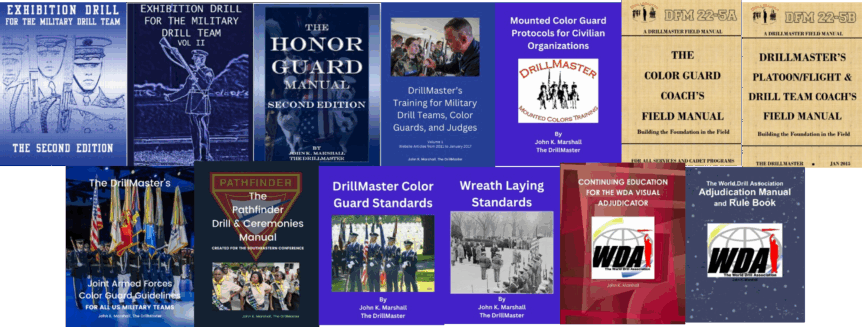The books that I’ve been working on and publishing are to educate as many people as possible right now and in the future. Some of the information exists nowhere else than these books. Let’s educate and improve our performances in Ceremonial Drill, Regulation Drill, and Exhibition Drill.
The Difference Between “Fall Out” and “Dismissed”
I was sent an email asking the meaning of both terms. I enjoy questions like this because then I get to dig deep and turn the response into an article. Did you know there is a difference between both terms, and did you know that most people don’t understand the difference and use either or both wrongly? Let’s take a look at their definitions and use.
The Effective Ripple Line
A ripple line for a military drill team performance is a sequential movement where actions occur in a wave-like (fast or slow, smooth or sharp) progression rather than simultaneously.
Missing the Value of Drill and Ceremonies
“Houston, We Have a Drill Problem…” Regulation and Ceremonial Drill Standards What we call regulation drill comes from: We also have ceremonial drill that is kept mostly in internal documents for the Army’s 3rd Infantry Regiment, the Old Guard; the Barracks Order for Marine Barracks Washington, the internal manuals for the Navy’s Ceremonial Guard and Coast Guard’s Ceremonial Honor Guard, …
“Colors” vs “Color Guard” as a Command
Deciphering information in the Army’s TC 3-21.5, Drill and Ceremonies (D&C) can take time and effort because not all passages are written as clearly as one might like. The use of the terms “colors” and “Color guard” are part of this. The Army isn’t alone in this, the other two D&C manuals are just as guilty!
Principles of a Visual Performance
The term “visual performance” has different meanings depending on the context in which it is used. For our purposes, we will concentrate on the principles involved in performance based in dance, (marching band) color guard, and military exhibition drill.
The Mission and Mistake of the DoDPAA
The Department of Defense POW/MIA Accounting Agency does a meticulous job reflected in their mission statement: “Provide the fullest possible accounting for our missing personnel to their families and the nation.” An extraordinary mission. The Missions The Recovery Mission – Long before a team is selected to roam a foreign countryside and climb rocky terrain, government-to-government talks take place, locations …
Vocabulary and Exhibition Drill
Whether you are a soloist, part of a tandem, tetrad, or larger drill team, understanding and applying the concept of vocabulary in a visual performance is essential.
What is “Audience Engagement”?
What is it that makes a routine grab the audience by the eyeballs and yell at them, “Don’t miss this or you’ll regret it!” Audience engagement, my friends, audience engagement. What is it and how do you get some?
Parading vs Presenting or Posting the Colors
There seems to be confusion on the announcements or commands to present and post the colors. Let’s iron that out.










